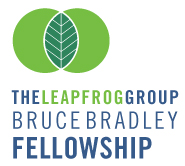Why Equity Matters to Safety in Health Care 
Authored by the 2022 Bruce Bradley Fellowship Class: Stacy Leick, Ashley Love, Roshini Moodley Naidoo, and Tanika Smith
“We cannot have quality in health care without equity” – Leah Binder, The Leapfrog Group President and CEO
Equity in health care was placed front and center in the Institute of Medicine’s defining frame of health care quality in the seminal 2001 report, Crossing the Quality Chasm. Finally, 21 years later, against the backdrop of the world’s worst public health event of the past century, equity in health care has gained prominence, as a construct deserving sharp focus and immediate action.
Leapfrog champions, supports, and enhances the safety of care received by patients navigating health care systems. This is achieved only through every patient receiving care that is equitable, free from the bias of race, gender, age, culture, language, and background. Equity means safety for every patient. No patient can be safer if another becomes less safe.
The inequitable delivery of health care has bubbled under the surface through the past decades. The pandemic has, with gusto, raised the matter of equity in health care to proportions not seen previously, from the universal access to vaccines to the provision of mental health services for adolescent to racial disparities in Covid mortality outcomes. A Leapfrog stakeholder, the Pittsburg Business Group on Health advocating for improvement in their region, described the breast cancer mortality rates for Black women in Pittsburgh as almost twice that for White women.
It strikes us that there is a groundswell of momentum around the world to tackle equity in health care, thereby offering the potential for universal solutions, shouldered by policymakers and practitioners, payers and providers, lawmakers, and advocates.
It is grossly inadequate for the rational normative of ‘do no harm’ to offer certainty to providers that the care delivered is equitable. That would be the same as 21 years ago saying, health care quality is the best, without measuring, reporting, improving, and then repeating the improvement cadence. Equity, as with every other dimension of health care quality including safety, must be defined and codified in the performance of health care systems. Even before laws mandate such an approach, it is necessary and progressive for participants in health care value chains, no matter where situated, to internalize what improving equity means for their organizations.
Equity is as much about organizational culture and mindset as it is about organizational strategy. We encourage health care organizations to take steps to build and entrench equity solutions in their organizational culture and strategies as of now.
A Checklist for Initiating an Organizational Equity Strategy
- Endorse an organizational wide commitment to equity from the head of the organization, reaching all levels of the organization.
- Give accountability to a named individual for designing and implementing equity solutions.
- Undertake a review of how closely the defining principles of equity aligns with the organization’s values and mission.
- Articulate a vision for what it would mean for equity to manifest universally across the range of the organization’s core services and products.
- Hold the position that inequity must exist in some form in certain organizational policies, and the funding and provision of health care.
- Clearly and crisply identify areas where equity gaps are most likely to be present in organizational strategies.
- Test the hypothesized inequity gaps and quantify how real and material the impact of these are.
- Design an equity strategy, informed by where the greatest opportunity for improvement has been identified.
- Correct glaring gaps decisively, balanced with long-strides for more complex changes.
- Embed equity solutions in the operating cadence of organizational workflows, so that solving for equity becomes a continuous organizational reality, and not a one time, fix all event.
Stacy Leick is the Communications Director for The Economic Alliance for Michigan. Ashley Love is the Director of Health and Benefits of Willis Towers Watson, Roshini Moodley Naidoo is the General Manager of Discovery Health. Tanika Smith is the Director of Communications for Teamsters Health & Welfare and Pension Trust Funds of Philadelphia and Vicinity.
